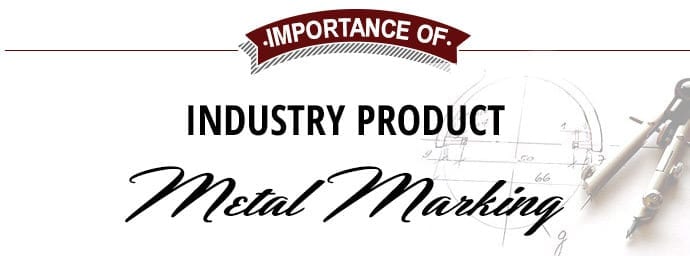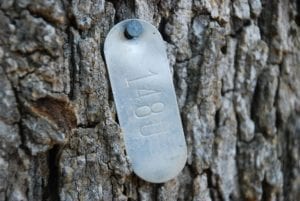
The industrial practice of metal marking finished metal products is commonplace in the manufacture of goods globally. Whether for inventory, quality control, regulatory, or any number of reasons, metal marking machines permanently mark items for identification purposes with a range of densities. Marks can be embedded on to a metal surface or part through a number of methods without damage. When completed, the mark’s imprint leaves the surface with a variety of characters and symbols in all shapes and sizes.
What is the Purpose of Metal Marking?
The use of industrial marking plays a significant role in identifying materials, products, and parts for a number of reasons. They are used on metal parts and like components in industries to accurately track or trace those parts.
The markings can represent a number of things:
- Serial numbers
- Manufacturing dates
- Origination
- Batch numbers
- Product codes
- Product data
- A combination of any of the above
Markings can then be used for a variety of purposes:
- Product replacement
Quality control - Supply chain issues
- Inventory control
- Recalls
- Product liability cases
- Warranties
Metal markings are used across a diverse array of industries to provide identification:
- Automotive
- Agricultural manufacturing
- Energy parts and components
- Medical device manufacturers
- Durable goods
- Aerospace
- Telecommunications
- Electronics
- Computers
How Metal Marking Helps Consumers
Industrial marking has become a very important aspect of production and manufacturing processes and plays a crucial role in the manufacturing process itself. Adequately marked parts properly identified by batch number, date of manufacture and-or the actual material itself can provide a wealth of data for end users.

For example, a mark can provide information about where an item originated, when it was made, its manufacturer and so on. If the part fails or the material is found to be flawed, the marking allows for it to be easily traced back to the source. The item can then be replaced, recalled or redesigned.
End consumers can learn more about the products they purchase by reading the markings. They can check for warranties or product reviews. For example, the identifying marks can tell when a refrigerator was built and where. Metal marking could allow a metal fabricator to know what grade of stainless steel was used by a manufacturer to produce a similar part. The industrial markings would show exactly what grade of stainless steel was used and any other important information that would be needed.
Industrial markings are also used for regulatory compliance. It provides the necessary information to ensure proper industry standards are met in delivering or manufacturing such products. This is of particular importance in the transport of hazardous chemicals and materials. Knowing that you have the right tubing, piping, and other types of containers to deliver such material safely without rupture or fragmenting is vitally important.
Common Methods of Metal Marking
There are a number of methods utilized to create industrial markings. In its basic form, hand stamps with a particular engraving or symbol were once used to make identifying marks into the surface of objects. Very much a hammer striking the hand stamp’s handle to make an indent into the object. Though the same concept holds true today, equipment is far more complex.
Metal Marking Presses
These are used rather than a hammer, and the machines can be programmed to advance numbers automatically for each part or surface.
Dot Peening
This is a type of marking that uses a special pin to mark the material with a series of dots to form lines, angles, or curves at varying depths, spacing, and orientations. The dot peen machines are pneumatically driven and stamp (or peen) the surface with a series of very small, closely spaced dots to form the numbers, characters or symbols. The peening can be customized, too, and can be used on rough or smooth finishes.
Laser
This is another method utilized in metal marking. They are generally used for on surface marking and need more time for deeper and durable markings. They are less effective than dot preening on most metals, and the technique is not recommended irregular or rough surfaces.
In today’s world, nearly all sectors of every industry utilize permanent metal marking. The significance of metal marking is in providing fast, accurate stamping for identification, tracking and tracing of parts and products for industries worldwide.
Want to learn more about Arthur Harris’ metal marking services? Contact us today!




